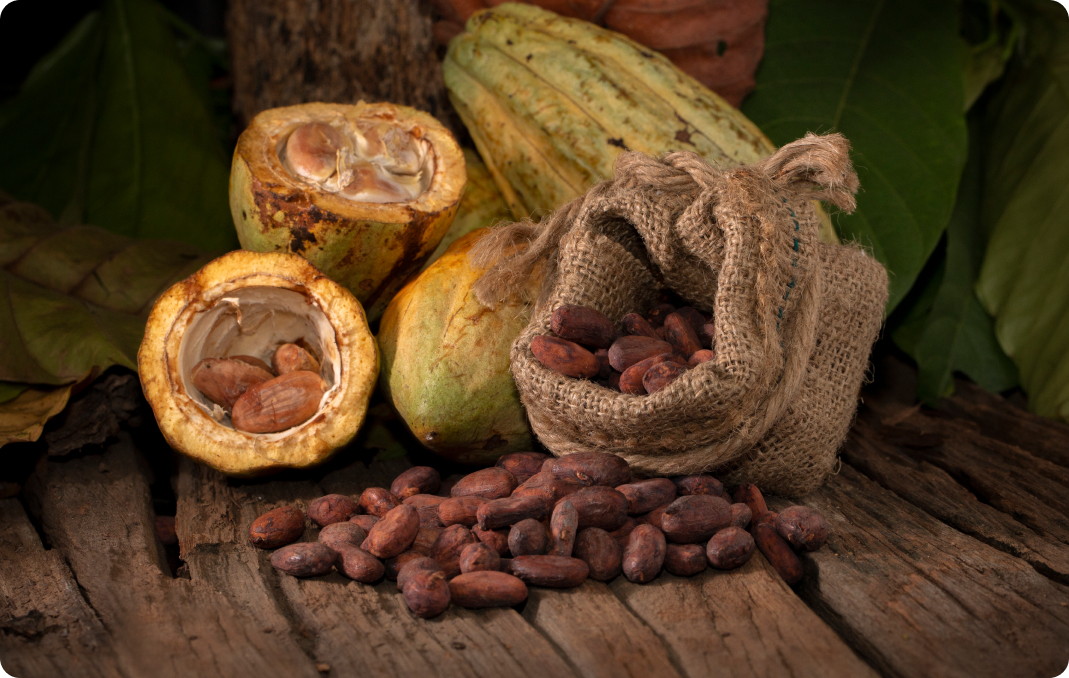In the first half of 2024, cocoa bean shipments surpassed last year’s performance, fueled by record international prices. However, upcoming European Union regulations pose a potential risk.
After peaking at over $10,000 per ton, cocoa prices have since dropped, starting September around $6,500, according to the International Cocoa Organization (ICCO). While the price has decreased, it remains nearly double what it was a year ago, driving Peruvian export growth.
This price fluctuation comes after global cocoa bean production for the 2023/2024 season fell by about 10%, due to lower yields in West Africa, the main production area, affected by aging plantations, disease, and logistical issues.
In Peru, production also declined in 2023. The Ministry of Agrarian Development and Irrigation (Midagri) reported 166,735 tons produced last year, a 3.1% drop from 2022 levels, due to environmental conditions, particularly in regions like San Martín, Ucayali, and Amazonas.
Despite this, cocoa has been the most dynamic product in Peruvian agribusiness so far in 2024. According to the Exporters Association (Adex), the value of cocoa bean exports rose 294.8% between January and July, totaling $370.7 million.
The total value of shipments in the first seven months of 2024 has already surpassed last year’s total of $219.5 million. Luis Mendoza, the manager of the Peruvian Cocoa Producers Association (APPCacao), stated that export values exceeded last year’s figures by mid-year, and projections suggest quadrupling the results by year-end.
“Even though most exports happen in the second half of the year, this year’s sales have already surpassed last year’s. This is important because estimates for this year predict the cocoa value chain will generate around $1 billion in economic activity, nearly four times what we generated in 2023,” Mendoza told Gestión.
José Antonio Mejía, president of Adex’s Coffee and Cocoa Committee, added that Peru could triple its cocoa bean exports by year’s end, reaching approximately $800 million.
Including cocoa liquor, butter, powder, and chocolate, Mejía forecasts total sales of $1.2 billion this year. From January to July alone, the sector reached $612 million in exports, compared to $204 million in 2023.
“It’s a historic record — Peru has never exported these quantities before, and it’s thanks to the current high cocoa prices,” Mejía stated.
Strategy for Cocoa Farmers
APPCacao’s Mendoza noted that this situation is highly beneficial for cocoa farmers, allowing them to cover production costs, which are around S/12 per kilo. Farmers are now receiving over S/20 per kilo, and in April, when prices exceeded $10,000, they earned more than S/35 per kilo.
In past years, cocoa farmers earned about S/8 per kilo, leading to losses, but with today’s profits, they can reinvest in fertilizers, pest control, irrigation, and other measures to improve productivity.
However, despite these favorable conditions, Mendoza emphasized that producers remain cautious. They don’t aim to expand cocoa farming at the expense of Amazon deforestation.
“The national strategy is not to expand land but to increase production and productivity. Currently, we produce about 750 kilograms per hectare, and the goal is to raise this to 1,200 kilograms per hectare within five years. This would allow us to increase our export volume to over 180,000 or even 200,000 tons of cocoa,” Mendoza explained.
To support this, the sector is requesting that Midagri allocate financial resources through a sustainable development program for cocoa.
“We’ve had meetings with Minister Ángel Manero and the Agroecology Department to initiate this program, which will secure budgetary resources for fieldwork aimed at boosting productivity,” Mendoza said.
Will High Prices Persist?
Cocoa prices remain volatile, as studies from the ICCO suggest that production in Côte d’Ivoire and Ghana has yet to recover. Mendoza from APPCacao estimates that prices will not drop below $5,000 per ton in the coming months.
“That’s a price that still covers costs and provides profit for producers. For the next year, and possibly into 2025 or 2026, we expect prices to remain above $5,000 per ton,” Mendoza noted.
While this benefits Peruvian exports, Mendoza believes Peru will still rank eighth in global exports, contributing between 1.8% and 2% of global production.
Mejía from Adex mentioned that Peru could move up to seventh place but noted that new European Union regulations on deforestation complicate the outlook.
European Union Regulation: A Risk Factor?
Amid the boost from high prices, Mendoza warned that cocoa producers are concerned about the upcoming European Union regulation, set to take effect on January 1, 2025. This law will prohibit imports of products from deforested areas, leaving producers just four months to adapt.
“While there’s progress on the digital technology platform, we still lag in gathering information on plots, which is the major challenge,” he said.
Mejía from Adex warned that only about 20% of the necessary geolocation, traceability, and legal framework for cocoa and coffee farms has been achieved.
He emphasized that exports to Europe, starting in mid-October, should already comply with the new rules due to the shipping times.
“If we don’t meet the EU’s requirements, there could be a 30% loss in export value, as cocoa not sent to Europe would have to be sold to the U.S. at lower prices,” Mejía predicted.
Jorge Figueroa, a coffee and cocoa supply chain specialist at Midagri, noted that they are working on a digital identity system that will certify non-deforestation status for coffee, cocoa, and palm oil producers, which will be launched in the coming weeks.
“It’s set to be launched soon, with full legal regulation, ensuring this document is officially recognized,” Figueroa confirmed.
He added that, while Midagri is committed to supporting producers through this transition, there are still some EU requirements, beyond georeferencing, that remain unclear.
